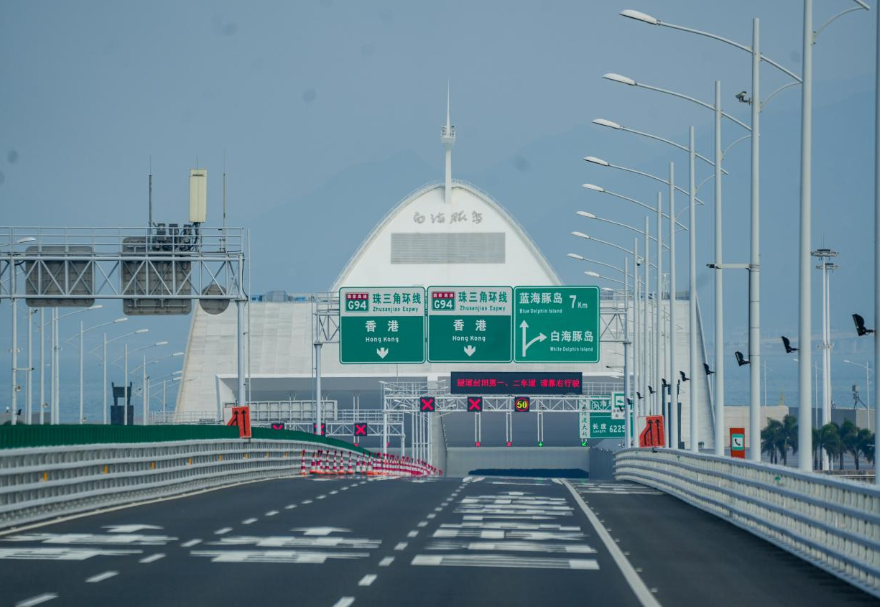
The Hong Kong-Zhuhai-Macao Bridge is a world-class marvel of cross-sea engineering, recognized as the longest and most technically complex of its kind. This tripartite project, linking Hong Kong, Zhuhai, and Macao spans 29.6 km, and includes a 6.7 km undersea tunnel built with deep immersion tube technology.
Spanning the Pearl River Estuary, the Shenzhen-Zhongshan Link connects Shenzhen, Guangzhou, and Zhongshan. Its 6.8 km tunnel is the world’s first two-way, eight-lane immersed tube made of steel-shell concrete, consisting of 32 sections and one final closure joint.
Guangzhou’s Haizhu Bay Tunnel is the city’s first large-diameter shield-bored tunnel. Stretching 4.35 km between Haizhu and Panyu districts, it deploys Building Information Model (BIM), BeiDou Navigation Satellite System, and a self-developed Integrated Project Management (IPM) platform.
As Shenzhen’s first underwater vehicular passage, the Mawan Tunnel stretches 8.05 km between Qianhai and Dachan Bay. With a maximum excavation diameter of 15.5 meters, it is currently China’s largest subsea shield tunnel.
The Zhuhai Tunnel is South China’s first large-diameter shield tunnel project. Designed with three lanes in each direction, the 5-km tunnel runs parallel to the south part of the existing Zhuhai Bridge. Set to open in December 2025, it will cut travel time across the bay to just 5 minutes, easing congestion on the bridge.
The new Hengqin Line of Macao's Light Rapid Transit (LRT) spans 2.2 km, including a 900-meter undersea segment, Macao’s first rail project using shield tunneling technology. Upon its launch in December 2024, the travel time between the Hengqin Port and Macao was reduced to just 2 minutes.
The Shizimen Tunnel provides the fastest connection between downtown Zhuhai and Hengqin’s core areas. This 2.7 km passage boasts the largest cross-sea shield tunnel in the China.